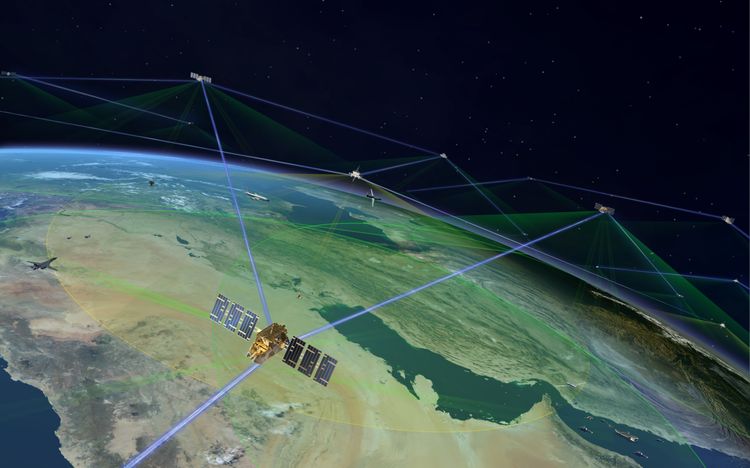The Space Development Agency has contracts for more than 250 satellites in “Tranche 2” of its proliferated low-Earth orbit constellation. Now it’s got a $491 million deal with General Dynamics to develop the ground systems and integration needed to capture all the data pouring down from those satellites.
General Dynamics, which previously won a $324 million contract in 2022 for Tranche 1 of its ground systems, will earn up to $887 million in operations and sustainment through fiscal 2029—making GD one of SDA’s biggest and most important contractors.
Having an effective ground architecture that can connect to all the other contractors’ satellites “really is the most critical element of Tranche 1,” an SDA official told reporters in 2022.
That is even more so today, as the satellite architecture expands from five suppliers of 161 data transport and missile warning/tracking satellites in Tranche 1 to seven contractors providing 264 satellites in Tranche 2.
“Without a ground segment, our space vehicles orbiting around the Earth can’t really do what we need them to do,” the SDA official said in 2022. “They can do things autonomously, but in order to make things work as a complete network, as a complete enterprise, you really do need the ground segments to manage the enterprise and the mesh and the control of the space layer.”
Assistant Secretary of the Air Force for Space Acquisition Frank Calvelli listed among his nine “tenets for space acquisition” the need to ensure ground systems are complete and ready for operations prior to launch so that users can employ satellite data as soon as the spacecraft reach orbit.
Last summer, SDA announced its intent to award a sole-source contract to General Dynamics for ground segment operations.
SDA now has two ground control operations facilities, one at Redstone Arsenal, Ala., and a second at Grand Forks Air Force Base, N.D. Officials cut the ribbon on the Redstone facility in May and started operations at Grand Forks late last month.
Concern expressed in the past about “vendor lock” concerns seem to have faded. In April, DefenseScoop reported that Col. Kalliroi Landry, SDA’s support cell chief, had said “SDA does not want to build a proliferated ground segment to support a proliferated space segment.”
